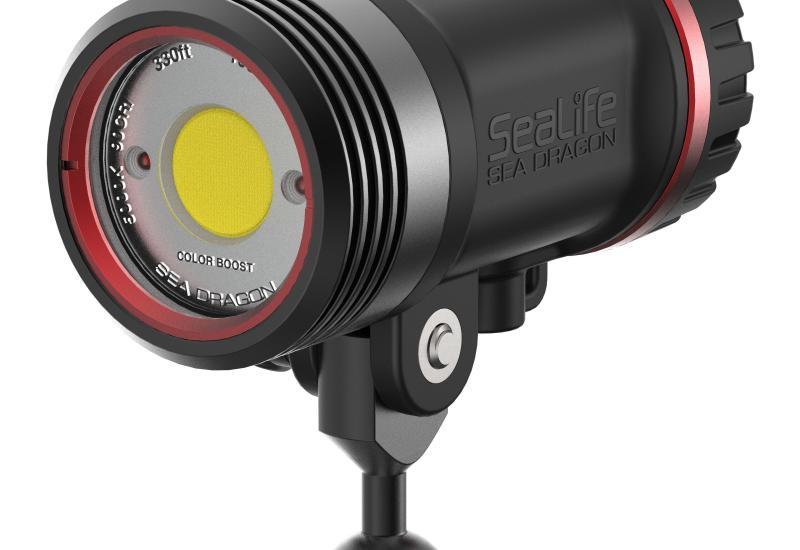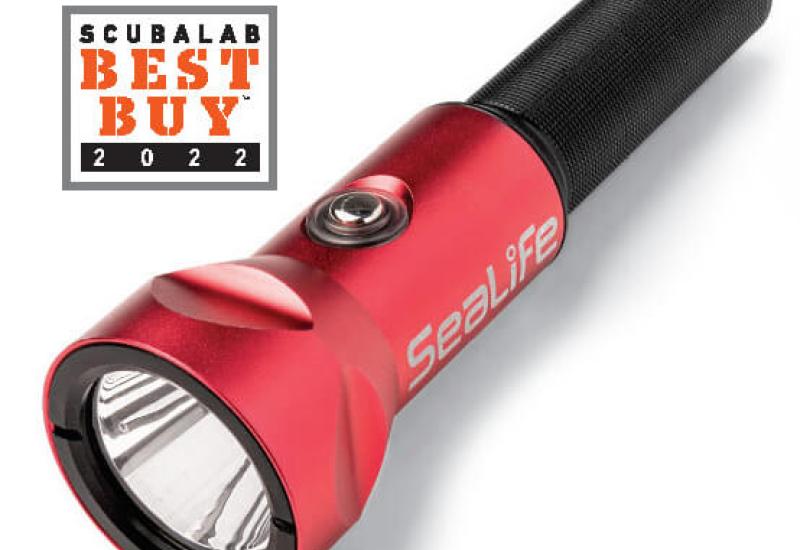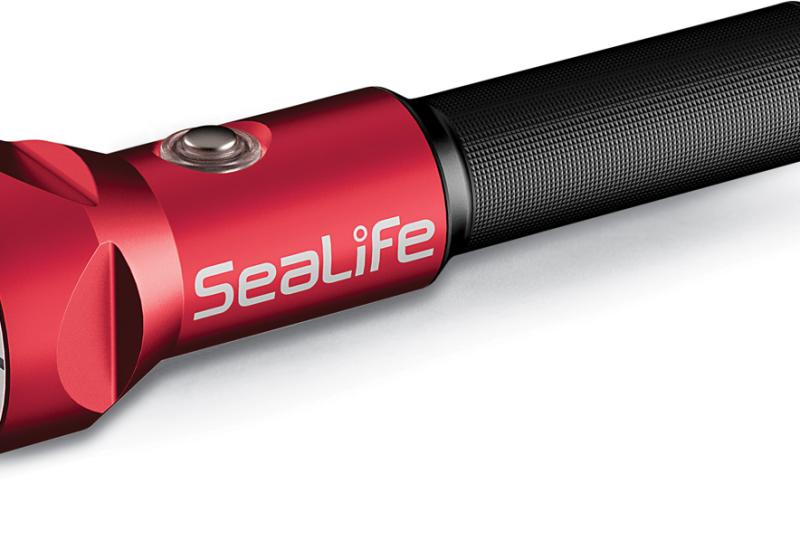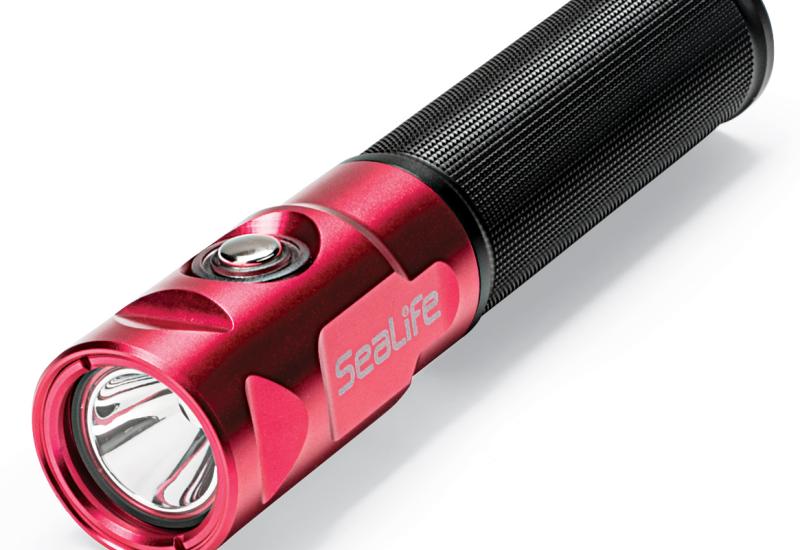Housing the Coolpix 5000
||
|---|
|  |
|
| The Nikon Coolpix 5000|
I have read some of your reviews and although I am not ready to abandon my Nikonos V, I would like to get a good digital camera that I might later use under water. Do you have any recommendations as to makes and models? I read that you had used the Olympus 3030. Would you recommend it or one of the newer Olympus models?
--Ray Sullivan
The first camera I used to test the digital waters was an Olympus 3040 in a Light & Motion Tetra housing at the Digital Shootout in Indonesia last November. While I must admit I knew very little about digital imaging, the staff instructors led me through the camera and computer technology enough so that I could concentrate on what I did know--taking pictures. For snapshots, I found it a very powerful tool, especially with the immediate feedback of the LCD screen. But for my professional needs, the file sizes were too small for serious reproduction and other issues like digital lag (the time between the shutter press and the image record) and problems with critical focus via the LCD were also vexing.
As I write this nine months later, digital has become an integral part of my professional bag of tricks. Housing a Nikon D1X single-lens-reflex camera solved the file size, digital lag and even focus confirmation issues. However, the cost of entry at this level will no doubt dissuade many shooters, and housing manufacturers have tried to find the right digital prosumer camera for the mass market. For Ikelite and Light & Motion, as well as others like Aquatica, Subal and Hugyfot, the Nikon Coolpix 5000 has proved to be the right combination of affordability and performance.
Why the Coolpix 5000?
-
5.0-megapixel CCD
-
Compatible with CompactFlash cards for up to one gigabyte of data storage
-
Hot shoe for external strobe connection
-
Multiple exposure modes, including program auto, aperture priority, shutter priority and manual
-
Multiple flash modes
-
Manual and auto-focus
Why Not the Coolpix 5000?
-
No RAW file format
-
Slow write time to TIF, leaving only JPEG as viable format. Still unacceptably small files for extreme enlargement or magazine reproduction
-
Digital lag remains problematic for underwater subjects
Given the state of the art in prosumer cameras, the advantages outweigh the disadvantages and the Nikon Coolpix 5000 is in fact a good choice to house.
Ikelite Coolpix 5000 Housing
||
|---|
|  |
|
| Ikelite Coolpix 5000 housing|
Ikelite was first to market its Coolpix 5000 housing. Ikelite has been able to use one basic Lexan injection mold and adapt it to a variety of different cameras, each with unique control levers and buttons. The clear housing provides an easy means to view small problems before they become big ones. For example, you can see the compression seal of the O-ring at a glance, and in the unlikely event water leaks inside, you'll realize it very quickly. For anyone familiar with the placement and function of the camera controls above water, the underwater ergonomics are instinctive and logical.
Ikelite has a unique means to handle the strobe synchronization issue with the Coolpix 5000. Recognizing that there is no way to fire a flash without the built-in strobe, and acknowledging that the built-in strobe is too close to the lens (undoubtedly causing backscatter due to particles in suspension under water), Ikelite built a deflector into the housing. This shoots the strobe light up through the clear housing where an external slave sensor can pick up the light and fire the auxiliary strobe.
One of the big problems with strobe light and digital cameras is that most cameras now use a preflash to assist with gauging TTL light levels. Firing the preflash would trigger a conventional slave strobe so that when the main flash fires (and the shutter is open), the strobe would not be recycled and able to fire in synch. Ikelite has solved this problem with a pair of dedicated digital strobes (the DS50 and DS125) and its DS slave sensor. According to the Ikelite owner's manual, "This strobe package was designed to work with cameras that have no synch cord connection, cameras whose built-in flash is obstructed by the housing, or those wanting to use a strobe without a connecting synch cord ... the DS sensor detects the light from the camera's flash and instructs the DS substrobe to output the same amount of light." If there is a preflash, the DS strobe matches that, and when the main flash fires, it matches that as well. With this system, digital TTL automation is reality.
For those who wish to shoot available light only, the Ikelite comes with an UR-Pro color-correction filter. The housing comes with a flat port, but an optional dome port is available for use with the Nikon WC-E68, 19mm wide-angle conversion lens. In addition, the standard lens port is threaded so that accessory macro and wide-angle lenses from Sea & Sea and Inon can be screwed on above or below the surface. This makes for an extremely versatile set of underwater optics?allowing you to take fish portraits and close-ups with the standard lens, and either wide-angle or macro with the simple addition of a supplementary lens.
Suggested retail for Ikelite Coolpix 5000 housing: $950.
Web: www.ikelite.com.
Light & Motion Tetra 5000
||
|---|
|  |
|
| Light & Motion Tetra 5000 housing|
Light & Motion decided to go with a cast aluminum housing for the Coolpix 5000, an elegant solution. Utilizing the same latches, strobe synchronization ports and optical ports found in their popular Olympus Tetra housings, this iteration is thoroughly customized to the unique features of the Coolpix 5000. For example, for auto-exposure to work, light must bounce back to a small sensor located just to the side of the internal flash. With a clear housing, no worries. But with the opaque aluminum housing, a light pipe had to be built in to transmit the reflected light back to the sensor.
Light & Motion uses a clever combination of buttons and dials to operate the camera functions through the housing, and added a clear rectangular viewing port to the camera's rear LCD screen. This gives the photographer the ability to review images just taken, and also to delete images while under water. This, combined with the shoot capacity of a one-gigabyte microdrive or CompactFlash card, gives an incredible 422 shots at the Fine JPEG setting, more than enough for even the most productive of dives.
The Tetra housing utilizes the camera's hot shoe and an external Nikonos-style or Wetmate (wet TTL) strobe synch port to connect the external strobe. One of the very clever new features of the Tetra 5000 is the ROC strobe controller to fire the camera either as digital TTL strobe, manual exposure bracketing based on TTL feedback, or full manual strobe values. The system comes from the factory programmed to the strobe profile of the Sea & Sea YS90DX, but a wide variety of strobes can be easily dialed into the system. Once configured, the system can shoot either full TTL, or easily bracket on either the over- or under-exposure side. Combined with the instant feedback and gratification of the LCD screen, this is probably the easiest and most versatile exposure control ever built into an underwater camera housing.
The Tetra housing offers interchangeable ports to accommodate two choices of wide-angle optic and a macro lens that extends the camera's close focus capability to nearly life-size (1:1).
Suggested retail for Tetra 5000: $1,499.
Web: www.uwimaging.com.
Whether you choose the Ikelite or the Light & Motion housing, you'll find exciting imaging possibilities with housing features designed to facilitate the best elements of the camera. Of course, newer and better cameras are always in the pipeline, and the housings will lag the camera's introduction. But the Coolpix 5000 and a quality housing is a great place to be for now. At least that's the case as long as you are content with shooting JPEG. If you need bigger file sizes, a housed digital SLR like the Canon D60, Nikon D1X or the new Nikon D100 should be on your wish list.
|| |---|
| |
| The Nikon Coolpix 5000|
I have read some of your reviews and although I am not ready to abandon my Nikonos V, I would like to get a good digital camera that I might later use under water. Do you have any recommendations as to makes and models? I read that you had used the Olympus 3030. Would you recommend it or one of the newer Olympus models?
|
| The Nikon Coolpix 5000|
I have read some of your reviews and although I am not ready to abandon my Nikonos V, I would like to get a good digital camera that I might later use under water. Do you have any recommendations as to makes and models? I read that you had used the Olympus 3030. Would you recommend it or one of the newer Olympus models?--Ray Sullivan
The first camera I used to test the digital waters was an Olympus 3040 in a Light & Motion Tetra housing at the Digital Shootout in Indonesia last November. While I must admit I knew very little about digital imaging, the staff instructors led me through the camera and computer technology enough so that I could concentrate on what I did know--taking pictures. For snapshots, I found it a very powerful tool, especially with the immediate feedback of the LCD screen. But for my professional needs, the file sizes were too small for serious reproduction and other issues like digital lag (the time between the shutter press and the image record) and problems with critical focus via the LCD were also vexing.
As I write this nine months later, digital has become an integral part of my professional bag of tricks. Housing a Nikon D1X single-lens-reflex camera solved the file size, digital lag and even focus confirmation issues. However, the cost of entry at this level will no doubt dissuade many shooters, and housing manufacturers have tried to find the right digital prosumer camera for the mass market. For Ikelite and Light & Motion, as well as others like Aquatica, Subal and Hugyfot, the Nikon Coolpix 5000 has proved to be the right combination of affordability and performance.
Why the Coolpix 5000?
5.0-megapixel CCD
Compatible with CompactFlash cards for up to one gigabyte of data storage
Hot shoe for external strobe connection
Multiple exposure modes, including program auto, aperture priority, shutter priority and manual
Multiple flash modes
Manual and auto-focus
Why Not the Coolpix 5000?
No RAW file format
Slow write time to TIF, leaving only JPEG as viable format. Still unacceptably small files for extreme enlargement or magazine reproduction
Digital lag remains problematic for underwater subjects
Given the state of the art in prosumer cameras, the advantages outweigh the disadvantages and the Nikon Coolpix 5000 is in fact a good choice to house.
Ikelite Coolpix 5000 Housing
|| |---|
| |
| Ikelite Coolpix 5000 housing|
Ikelite was first to market its Coolpix 5000 housing. Ikelite has been able to use one basic Lexan injection mold and adapt it to a variety of different cameras, each with unique control levers and buttons. The clear housing provides an easy means to view small problems before they become big ones. For example, you can see the compression seal of the O-ring at a glance, and in the unlikely event water leaks inside, you'll realize it very quickly. For anyone familiar with the placement and function of the camera controls above water, the underwater ergonomics are instinctive and logical.
|
| Ikelite Coolpix 5000 housing|
Ikelite was first to market its Coolpix 5000 housing. Ikelite has been able to use one basic Lexan injection mold and adapt it to a variety of different cameras, each with unique control levers and buttons. The clear housing provides an easy means to view small problems before they become big ones. For example, you can see the compression seal of the O-ring at a glance, and in the unlikely event water leaks inside, you'll realize it very quickly. For anyone familiar with the placement and function of the camera controls above water, the underwater ergonomics are instinctive and logical.
Ikelite has a unique means to handle the strobe synchronization issue with the Coolpix 5000. Recognizing that there is no way to fire a flash without the built-in strobe, and acknowledging that the built-in strobe is too close to the lens (undoubtedly causing backscatter due to particles in suspension under water), Ikelite built a deflector into the housing. This shoots the strobe light up through the clear housing where an external slave sensor can pick up the light and fire the auxiliary strobe.
One of the big problems with strobe light and digital cameras is that most cameras now use a preflash to assist with gauging TTL light levels. Firing the preflash would trigger a conventional slave strobe so that when the main flash fires (and the shutter is open), the strobe would not be recycled and able to fire in synch. Ikelite has solved this problem with a pair of dedicated digital strobes (the DS50 and DS125) and its DS slave sensor. According to the Ikelite owner's manual, "This strobe package was designed to work with cameras that have no synch cord connection, cameras whose built-in flash is obstructed by the housing, or those wanting to use a strobe without a connecting synch cord ... the DS sensor detects the light from the camera's flash and instructs the DS substrobe to output the same amount of light." If there is a preflash, the DS strobe matches that, and when the main flash fires, it matches that as well. With this system, digital TTL automation is reality.
For those who wish to shoot available light only, the Ikelite comes with an UR-Pro color-correction filter. The housing comes with a flat port, but an optional dome port is available for use with the Nikon WC-E68, 19mm wide-angle conversion lens. In addition, the standard lens port is threaded so that accessory macro and wide-angle lenses from Sea & Sea and Inon can be screwed on above or below the surface. This makes for an extremely versatile set of underwater optics?allowing you to take fish portraits and close-ups with the standard lens, and either wide-angle or macro with the simple addition of a supplementary lens.
Suggested retail for Ikelite Coolpix 5000 housing: $950.
Web: www.ikelite.com.
Light & Motion Tetra 5000
|| |---|
| |
| Light & Motion Tetra 5000 housing|
Light & Motion decided to go with a cast aluminum housing for the Coolpix 5000, an elegant solution. Utilizing the same latches, strobe synchronization ports and optical ports found in their popular Olympus Tetra housings, this iteration is thoroughly customized to the unique features of the Coolpix 5000. For example, for auto-exposure to work, light must bounce back to a small sensor located just to the side of the internal flash. With a clear housing, no worries. But with the opaque aluminum housing, a light pipe had to be built in to transmit the reflected light back to the sensor.
|
| Light & Motion Tetra 5000 housing|
Light & Motion decided to go with a cast aluminum housing for the Coolpix 5000, an elegant solution. Utilizing the same latches, strobe synchronization ports and optical ports found in their popular Olympus Tetra housings, this iteration is thoroughly customized to the unique features of the Coolpix 5000. For example, for auto-exposure to work, light must bounce back to a small sensor located just to the side of the internal flash. With a clear housing, no worries. But with the opaque aluminum housing, a light pipe had to be built in to transmit the reflected light back to the sensor.
Light & Motion uses a clever combination of buttons and dials to operate the camera functions through the housing, and added a clear rectangular viewing port to the camera's rear LCD screen. This gives the photographer the ability to review images just taken, and also to delete images while under water. This, combined with the shoot capacity of a one-gigabyte microdrive or CompactFlash card, gives an incredible 422 shots at the Fine JPEG setting, more than enough for even the most productive of dives.
The Tetra housing utilizes the camera's hot shoe and an external Nikonos-style or Wetmate (wet TTL) strobe synch port to connect the external strobe. One of the very clever new features of the Tetra 5000 is the ROC strobe controller to fire the camera either as digital TTL strobe, manual exposure bracketing based on TTL feedback, or full manual strobe values. The system comes from the factory programmed to the strobe profile of the Sea & Sea YS90DX, but a wide variety of strobes can be easily dialed into the system. Once configured, the system can shoot either full TTL, or easily bracket on either the over- or under-exposure side. Combined with the instant feedback and gratification of the LCD screen, this is probably the easiest and most versatile exposure control ever built into an underwater camera housing.
The Tetra housing offers interchangeable ports to accommodate two choices of wide-angle optic and a macro lens that extends the camera's close focus capability to nearly life-size (1:1).
Suggested retail for Tetra 5000: $1,499.
Web: www.uwimaging.com.
Whether you choose the Ikelite or the Light & Motion housing, you'll find exciting imaging possibilities with housing features designed to facilitate the best elements of the camera. Of course, newer and better cameras are always in the pipeline, and the housings will lag the camera's introduction. But the Coolpix 5000 and a quality housing is a great place to be for now. At least that's the case as long as you are content with shooting JPEG. If you need bigger file sizes, a housed digital SLR like the Canon D60, Nikon D1X or the new Nikon D100 should be on your wish list.










